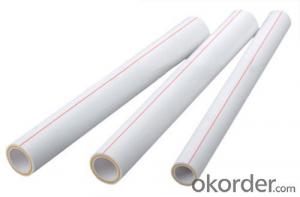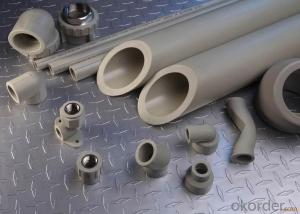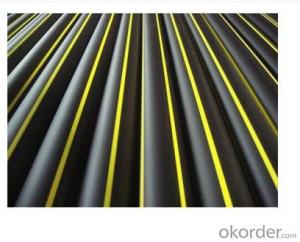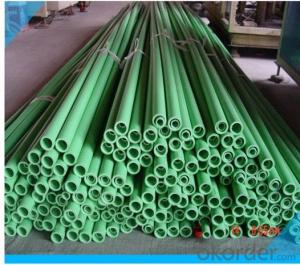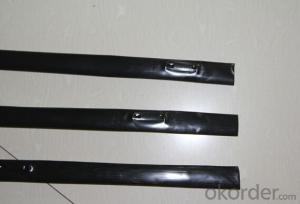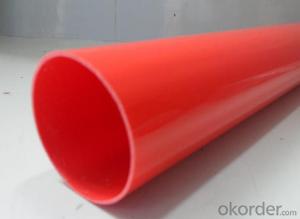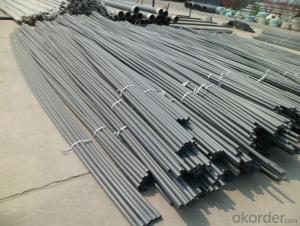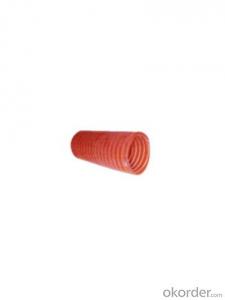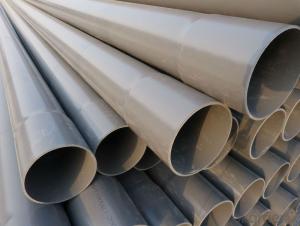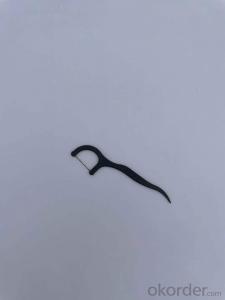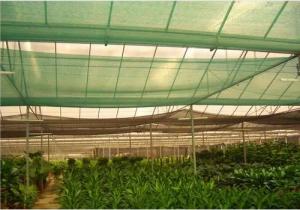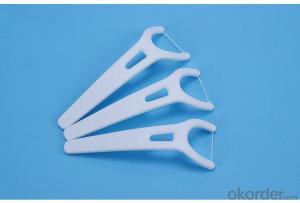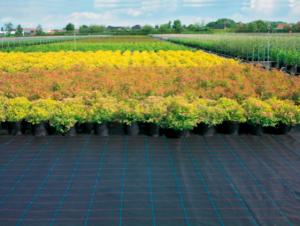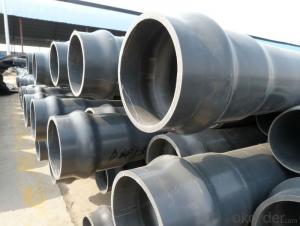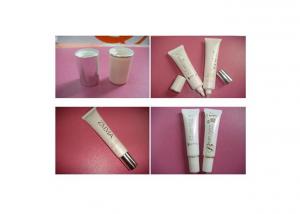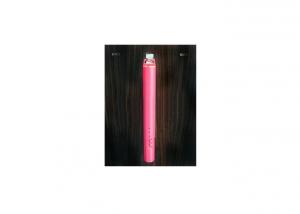2016 PPR house hold plastic pipe suppliers
- Loading Port:
- China main port
- Payment Terms:
- TT OR LC
- Min Order Qty:
- 1000 m
- Supply Capability:
- 100000 m/month
OKorder Service Pledge
OKorder Financial Service
You Might Also Like
Introduction of Our Products:
1.It is used in industrial fields, agriculture and garden irrigation
2. Beauty appearance.
3.Thermal insulation and energy saving.
4. Easy installation
5.excellent heat resistance and pressure resistance
6. affordable price
Quick Details
Material: PP-R, PPR
Technics: injection
Type: pipe
Place of Origin: China (Mainland)
Model Number: 20-110MM
Connection: Welding
Shape: Equal
Head Code: round
Product Type: Ppr pipe
Color: white, grey, green
Item number: DSE001-DSE010
Material: PP-R, PPR
Technics: injection
Type: pipe
Place of Origin: China (Mainland)
Model Number: 20-110MM
Connection: Welding
Shape: Equal
Head Code: round
Product Type: Ppr pipe
Color: white, grey, green
Item number: DSE001-DSE010
1.Material : | PPR |
2.Color: | White, Gray, Green, or as you required. |
3.Size: | 20-110mm |
4.Logo: | CMAX or Customized |
5.MOQ: | 500pcs |
6.Samples Time:
| (1) 4-5days-If you want to customize your logo. |
(2) 1day-For our existing samples for reference. | |
7.OEM Accepted | Yes |
8.Certification available: | Yes |
9.Packing Details: | Weaving Bag |
10.Production Capacity: | 5,000,000pcs Per month. |
11.Payment Term: | (1) L/C,T/T,D/P |
Specifications:
PPR PIPE
1) Material:HYOSUNG R200P, Basell H5416
2) Size:20-160MM
3) Standard:DIN8077/8078
4) Pressure:PN10
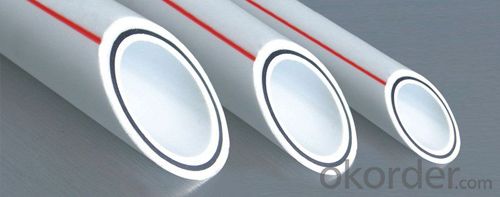
PPR Pipes Advantages:
1. Sanitization & Non-poison: This product is green building material which is able to use for pure clean drinking water pipe system. No heavy metal additives would not be covered with dirt or contaminated by bacterium.
2. High Temperature Resistance: the maximum sustained working temperature is up to 70 Degrees Celsius, the maximum transient temperature is up to 95 Degrees Celsius.
3. Corrosion-Proof & Non-Fouling: Resist chemical matters or electron chemical corrosion. Able to avoid the pipe's fouling or blocking as well as the blemish, rust on basin and bath.
4. Heat Preservation & Energy-Saving: Excellent heat insulation features, minimal thermal conductivity which is only 0.5% of the conductivity of metal pipes.
5. Less Weight & High Strength: Its proportion is only 1/8th of metal pipe’s, with pressure-proof strength up to over 5MPa(50kg/sqcm),high tenacity and impact resistance.
6. Beautiful Appearance & Higher Flow Capacity:Smooth inner and outer surfaces, less flowing resistance, soft color and beautiful figure.
7. Easy and Reliable Installation: Using heat melting joint without sleeve wire, and taking few seconds for connecting and adopting good quality copper inserts to connect the metal pipe and basin.
8. Long Using Life: The pipe system can be used for over 50 years under normal condition.
9. PP-R is recyclable and environmental friendly.
With the high-quality materials .Minde PP-R pipes meet the DIN8077/8078 standard .Depending on the pressure ,the pipes can be used in temperature up to 70°Cwith an extrapolated service life up to 50 years .
.
1)Drinking water pipeline system.
2)Recyclable ,benefit to the environment
3)Resistance to abrasion and corrosion.
4)Connected by heating ,leakage prohibit
5)Long lifespan,Minimum 50 years life time at 60 or 70°C and 10 bar maximum pressure.
- Q:Is it OK to drink water with plastic pipes at high temperature?
- If the plastic pipe is non edible standard, then there must be a problem, plastic meets high temperature will be deformed, and release harmful substances, long-term drink so, will certainly affect health
- Q:Can plastic tubes be used for oil lines?
- Yes, plastic tubes can be used for oil lines.
- Q:This is for silver eagles, silver maple leafs, and silver rounds that i have stored in plastic coins tubes. I have been using cotton balls stuffed into the top to take up air space and prevent sliding around; but will this damage the silver?
- Cotton balls work fine, and won't damage the silver IF they are clean and you don't shake the tubes a lot. (Coin companies use cotton balls when shipping coins in tubes if needed.)
- Q:Can plastic tubes be recycled?
- Yes, plastic tubes can be recycled.
- Q:I still have the fork tubes mounted to the bike. I have removed the cap, spacer tube, washer, spring, damper bolt (from the bottom of the tube) and removed the damper and short spring. I have pried the dust cap (rubber seal) and slid it all the way up. There is a piece of plastic? or nylon? that is blocking the circlip(I assume). I do not have a manual for this bike but I can not get one for a few days, so the help would be great!!
- Just pry the plastic ring up (nothing is holding it). Perhaps it's stuck to the foam ring underneath it. After you remove the circlip, the the fork tube and lower will have to be pulled apart. The fork seal is in very tight. Hold the tube in one hand and the lower in the other hand. Push the forks together. Yank them apart with force (a bushing inside of the forks will hit against the seal like a slide hammer). They won't come apart in one pull. Push them - in - OUT -in - OUT - in - OUT
- Q:Can plastic tubes be used for storing pet products or treats?
- Yes, plastic tubes can be used for storing pet products or treats. They provide a convenient and hygienic way to store and dispense pet items, ensuring they remain fresh and protected from contaminants.
- Q:The difference of PVC plastic pipe and PE pipe?
- The same plastic pipe, the difference lies in the two properties and advantages are not the same, PVC plastic pipe is the main advantage of flame retardant, wide use, PE pipe can only be used in ordinary civil pipe.
- Q:What flange plate is used to connect the plastic pipe to the flange valve?
- Flange flange and pipe connection requirements are the same, only the welding materials for plastic welding, welding material should be the same as the parent material.
- Q:Are plastic tubes suitable for medical device manufacturing?
- Yes, plastic tubes are suitable for medical device manufacturing. They are commonly used in various medical applications such as catheters, IV lines, and respiratory tubes due to their flexibility, durability, and compatibility with sterilization processes. Plastic tubes can be customized to meet specific requirements and are cost-effective compared to other materials. Additionally, they offer excellent biocompatibility and can be manufactured to be resistant to chemicals and bacteria, ensuring patient safety.
- Q:Are plastic tubes suitable for use in the automotive industry?
- Yes, plastic tubes are suitable for use in the automotive industry. They offer various advantages such as lightweight construction, resistance to corrosion, flexibility, and cost-effectiveness. Plastic tubes can be used for various applications in vehicles, including fuel lines, coolant systems, and air conditioning.
1. Manufacturer Overview |
|
|---|---|
| Location | |
| Year Established | |
| Annual Output Value | |
| Main Markets | |
| Company Certifications | |
2. Manufacturer Certificates |
|
|---|---|
| a) Certification Name | |
| Range | |
| Reference | |
| Validity Period | |
3. Manufacturer Capability |
|
|---|---|
| a)Trade Capacity | |
| Nearest Port | |
| Export Percentage | |
| No.of Employees in Trade Department | |
| Language Spoken: | |
| b)Factory Information | |
| Factory Size: | |
| No. of Production Lines | |
| Contract Manufacturing | |
| Product Price Range | |
Send your message to us
2016 PPR house hold plastic pipe suppliers
- Loading Port:
- China main port
- Payment Terms:
- TT OR LC
- Min Order Qty:
- 1000 m
- Supply Capability:
- 100000 m/month
OKorder Service Pledge
OKorder Financial Service
Similar products
New products
Hot products
Hot Searches
Related keywords
